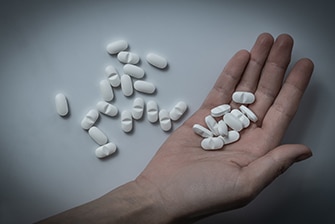What Is The Opioid Crisis?
The opioid crisis is known as the health crisis surrounding prescription, and nonprescription, opioid drugs. The overdose and death rates of opioids are climbing exponentially and the use of the drug is more rampant now than ever.
How Did the Opioid Crisis Begin?
In the late 1990s, pharmaceutical companies reassured the medical community that patients would not become addicted to prescription opioid pain relievers, and healthcare providers began to prescribe them at greater rates. Before long, this lead to the medications becoming misused and it became apparent that these medications were indeed highly addictive. However, because of how lucrative prescribing the drug is for both healthcare providers and the pharmaceutical industry, it is becoming increasingly more difficult to prevent unnecessary prescribing of the drugs.
As such, opioid overdose and addiction rates began to increase. Due to the high cost of prescription medication, people began turning to street opioids, such as heroin, in order to get their fix at a cheaper cost.
Opioid Crisis Statistics
- Roughly 21 to 29 percent of patients prescribed opioids for chronic pain misuse them.
- Over 130 people die every day from an opioid-related drug overdose
- 10.3 million people misused opioid drugs in 2018
- Nearly 80% of heroin users started with prescription opioids
- About 10 percent of people prescribed opioids developed depression after a month of taking the drugs
How Can We Stop the Opioid Crisis?
Opioids are prescribed to people who are experiencing chronic pain, such as after surgery, that normal over-the-counter medications aren’t strong enough to handle. They are not meant to be prescribed in the long-term and can be very effective for the individuals who need them for pain management. Due to the highly addictive nature of opioids, dependence can occur after just a few uses, which begs the question: How can we stop the opioid crisis?
Prevention
One of the best ways to stop the opioid crisis is to invest in prevention. In fact, for every dollar invested in an evidence-based prevention program, the costs related to substance use disorders decrease by an average of $18, according to the National Institute on Drug Abuse.
Prevention is best taught to children at a young age, long before they would ever be exposed to drugs. While it may seem too young to start teaching children about substance abuse, it is important to establish those morals while they are young so that when they do encounter peer pressure, they are well educated about what may happen.
Look into Alternatives
The purpose of opioid medications is to help comfort people experiencing chronic pain. Those experiencing it may feel as if opioids are their only option, which isn’t the case. Some alternatives include:
- Physical therapy
- Radiofrequency
- CBD oil
- Massage therapy
- Acupuncture
- Over-the-counter pain relievers
Know the Signs of Addiction
One person’s level 10 pain can be another person’s level 6 pain, so sometimes it can be difficult for healthcare providers to find the right dosage off the bat. This often leads to overprescribing or underprescribing, both of which can lead individuals to take more opioids than necessary and can lead to addiction. Knowing the initial signs of addiction can help prevent a lifetime of issues down the line, including overdose and death. Some of these signs include:
- Taking more medication than prescribed
- Drug-seeking behaviors, such as obtaining multiple prescriptions
- Turning to heroin
- Inability to slow or stop use
- Isolation from friends or family
- Loved ones expressing concern
Put Mental Health First
One of the most important things individuals can do to help stop the opioid crisis is to put their mental health first. There is a direct link between substance abuse and mental health. Addiction can spawn from mental health disorders, whether diagnosed or undiagnosed. It is important to put self-care first and do your best to keep your mental health a priority. By keeping stress levels and anxiety levels low, you will be able to stay more in-tune with your body and know if you may be becoming addicted to opioids. Or, if you have a history of mental health issues, you will know to avoid opioids entirely or be closely monitored by medical professionals if it’s been prescribed.
About Cliffside Malibu
Of course, the most obvious answer to stopping the opioid crisis would be for everyone to avoid taking opioids. However, this isn’t always realistic, and people fall into addiction every day. Once addiction has taken hold, it is important to get treatment right away.
Since no two addictions are the same, Cliffside Malibu offers an individualized treatment plan for every client. We are committed to providing evidence-based treatment through a continuum of care model including medically supervised detox, residential treatment, day treatment, and outpatient services. Our program also includes family therapy and holistic therapy, as well. Whether an individual is suffering from substance abuse and/or alcohol addiction, our programs are structured to create a supportive environment where healing can begin.
In addition to world-class treatment, Cliffside Malibu offers luxury accommodations, a serene environment, five-star dining, and plentiful amenities. We understand that addiction treatment is a rigorous process. Therefore, we provide for your comfort and relaxation at every turn, allowing you to rejuvenate, and meet the demands of treatment with your greatest energy and attention.
For more information on Cliffside Malibu, visit cliffsidemalibu.com
